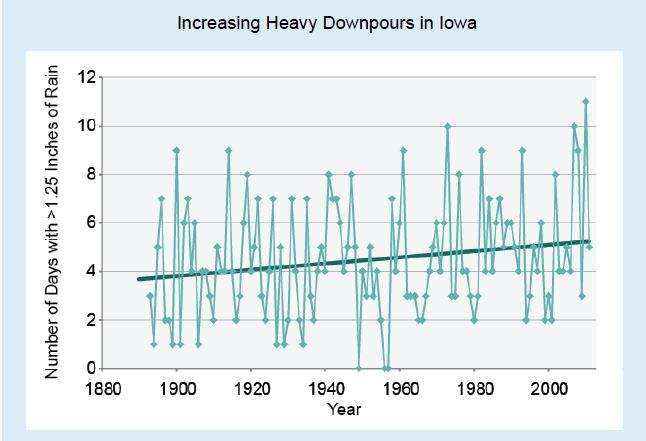Indirect Effects of Climate Change on Plants
Weeds, Insects, and Diseases
Warming temperatures associated with climate change will not only have an effect on crop species; increasing temperature also affects weeds, insect pests, and crop diseases. Weeds already cause about 34% of crop losses with insects causing 18% and disease 16%. Climate change has the potential to increase the large negative impact that weeds, insects, and diseases already have on our agricultural production system. Some anticipated effects include:
- several weed species benefit more than crops from higher temperatures and increased CO2 levels
- warmer temperatures increase insect pest success by accelerating life cycles, which reduces time spent in vulnerable life stages
- warmer temperatures increase winter survival and promote the northward expansion of a range of insects, weeds, and pathogens
- longer growing seasons allow pest populations to increase because more generations of pests can be produced in a single growing season
- temperature and moisture stress associated with a warming climate leaves crops more vulnerable to disease
- changes in disease prevalence and range will also affect livestock production
Modeling and predicting the rate of change and magnitude of the impact of weeds, insects, and disease on crops is particularly challenging because of the complexity of interactions between the different components of the system. The agricultural production system is complex and the interactions between species are dynamic. Climate change will likely complicate the management of weeds, pests, and diseases as the ranges of these species changes.
Effects on Soil Resources
The natural productive capacity of a farm or ranch system relies on a healthy soil ecosystem. Changing climate conditions, including extremes of temperature and precipitation, can damage soils. Climate change can interfere with healthy soil life processes and diminish the ecosystem services provided by the soil, such as the water holding capacity, soil carbon, and nutrients provided by the soils.
The intensity and frequency of extreme precipitation events are already increasing and is expected to continue to increase, which will increase soil erosion in the absence of conservation practices. Soil erosion occurs when rainfall exceeds the ability of the soil to absorb the water by infiltration. If the water can't infiltrate into the soil, it runs off over the surface and carries topsoil with it (Figure 9.2.7). The water and soil that runoff during extreme rainfall events are no longer available to support crop growth.
Shifts in rainfall patterns associated with climate change are projects to produce more intense rainstorms more often. For example, there has been a large increase in the number of days with heavy rainfall in Iowa (Figure 9.2.8), despite the fact that total annual precipitation in Iowa has not increased. Soil erosion from intense precipitation events also results in increased off-site sediment pollution. Maintaining some cover on the soil surface, such as crop residue, mulch, or cover crops, can help mitigate soil erosion. Better soil management practices will become even more important as the intensity and frequency of extreme precipitation increases.


